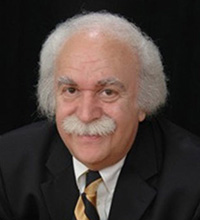If you were to believe Federal Bureau of Investigation (FBI) statistics, you might conclude that most homicides – some 85% – are committed with firearms or knives.
It’s currently unknown how many of the yearly 70,000-plus combined accidental and self-inflicted poisonings are really homicides in disguise, but the answer is certainly not zero.
Reinforcing this notion is the fact that deadly shootings and stabbings are extensively publicised in news and entertainment media content, which is heavily consumed by members of the public and widely shared on social media and other online platforms.
While the leading cause of intentional gun-related deaths in the United States (intentional self-injury) receives relatively little scrutiny, even less attention goes to more passive-aggressive, or clandestine, forms of violence.
Yet, acts of covert criminal behaviour might be more important – and much more prevalent – than FBI data have ever suggested.
According to data from the Centers for Disease Control and Prevention (CDC), eight of the 10 leading causes of death in the US are illnesses and diseases. In fact, the CDC reports that these ‘natural’ afflictions account for at least 90% of US deaths each year. The other two leading causes of death are accidents, which are typically ranked third on the list, and suicides at number 10.
These three causes – natural, accidental and self-inflicted – also appear to be the most frequent official classifications of later-identified covert homicides. Moreover, the methods used in many covert homicides mirror some common circumstances in accidental and self-inflicted deaths.
Poisoning, for example, accounts for nearly 66,000 accidental deaths and more than 6,000 suicides in the US each year, according to the CDC, but only about 100 annual homicides. It’s currently unknown how many of those yearly 70,000-plus combined accidental and self-inflicted poisonings are really homicides in disguise, but the answer is certainly not zero.
Preoccupied with overt criminal acts
Covert violence tends to be the sort that nobody sees coming – that is, until it’s too late. Not initially presenting as criminal acts, they typically receive little publicity and are given only cursory consideration by investigators and medical examiners.
The message is clear: why expend limited police resources on deaths that most likely resulted from poor health, old age or careless personal behaviour when there are overtly bad people out there shooting and stabbing innocent victims?
That is especially true when an act of covert violence convincingly resembles a non-criminal situation (such as an accidental fall or drowning) and/or appears to have an immediately plausible explanation (as in the cases of older adults who seemingly succumb to chronic illness).
The message is clear: why expend limited police resources on deaths that most likely resulted from poor health, old age or careless personal behaviour when there are overtly bad people out there shooting and stabbing innocent victims?
Largely because many deadly acts of covert violence masquerade as products of illness or accidents, it may take weeks, months or years until investigators are persuaded to examine a case more closely.
And such second-looks are rare, as they would typically require some kind of new physical evidence, a suspicious additional incident, the persistent urging of a friend or family member, or a perpetrator’s confession – all of which become less likely with the passage of time and while authorities become preoccupied with overt criminal acts, which are widely known to the public and committed out in the open with less ambiguous circumstances.
Stark differences
Using the Nexis database of US news sources, we uncovered 53 deaths that occurred between 1975 and 2019 and that were officially reclassified as homicides during the three-year period of July 2017 to June 2020.
For more than 75% of these ultimately identified cases of covert homicide, it took a minimum of several months – and up to 44 years – until they were reclassified. Moreover, there were stark differences in the circumstances of these covert homicides when compared to the FBI homicide data.
It is alarmingly clear that the incidence of covert violence is greater than the rate at which it is detected or recognised as malevolence.
For instance, guns or knives were used in very few of the cases (only about 6%), while almost 60% of these covert homicides were perpetrated with poisons, smothering/suffocation, fire/explosives or drowning.
And the characteristics of both perpetrators and victims, especially in terms of age and gender, differ significantly between these reclassified cases and official homicide statistics – which, in our view, have vastly undercounted acts of covert violence while focusing almost exclusively on overt forms committed with guns, knives and other weapons that are rarely used surreptitiously.
Another important pattern in cases of covert violence relates to a particular power imbalance between perpetrators and targets, as clandestine methods appear to be an especially effective strategy for those who want to lash out but lack the physical and/or social power to do so via overt means.
Further, the social institutions in any given society (such as families, schools, workplaces, healthcare and mass media) appear to manifest distinct patterns of covert violence committed by relatively powerless members against more powerful targets.
Examples include middle-school students who secretly place noxious substances in a teacher’s drink; nurse’s aides who smother an elderly patient with chronic illness; aggrieved individuals who poison their spouse’s food or push them down a flight of stairs; and disgruntled employees who tamper with consumer products to get back at the company that employs them.
It is alarmingly clear that the incidence of covert violence is greater than the rate at which it is detected or recognised as malevolence.
Greater resources required
Not only is it more difficult to detect covert violence compared to overt forms – as the former tend to be easily misunderstood as something else – but preventing these surreptitious acts also appears to be more complex.
We also can promote more social awareness and the importance of speaking up or intervening when individuals or situations do not seem or feel right – particularly when social norms related to politeness and privacy tend to prevent such action.
Promising prevention strategies do exist, but they can only be implemented after the presence of these acts is collectively acknowledged. To that end, we first must find more effective and safer outlets for members of society who feel powerless and marginalised or who experience shame and mistrust.
At the same time, reducing the entitlements of high-status groups that, once denied, often lead to frustration, anger and violence will go a long way, as well as increasing the credibility of conventional solutions for resolving difficult personal and political issues.
We also can promote more social awareness and the importance of speaking up or intervening when individuals or situations do not seem or feel right – particularly when social norms related to politeness and privacy tend to prevent such action.
Finally, law enforcement agencies and other authorities must prioritise the reduction of more nuanced or passive methods of human destruction – including via poisoning, drug overdose, drowning, arson/explosives and suffocation – alongside the more sensational overt methods, and this especially means committing greater resources (including funding and personnel) to support the procedures and initiatives for accomplishing such ends.
This article first appeared on the Transforming Society website, and is republished under a Creative Commons Licence; the original can be read here.
About the authors
 Jack Levin PhD is a professor emeritus at Northeastern University and co-director of the Brudnick Center on Violence and Conflict. He has authored or co-authored 30 books (including Mass Murder: America’ s Growing Menace, The Will to Kill: Making Sense of Senseless Murder, and The Violence of Hate), and has published more than 150 articles in professional journals and newspapers. He also appears frequently on US national television, and has spoken to a wide variety of community, academic, and professional groups, including the White House Conference on Hate Crimes and the International Association of Chiefs of Police.
Jack Levin PhD is a professor emeritus at Northeastern University and co-director of the Brudnick Center on Violence and Conflict. He has authored or co-authored 30 books (including Mass Murder: America’ s Growing Menace, The Will to Kill: Making Sense of Senseless Murder, and The Violence of Hate), and has published more than 150 articles in professional journals and newspapers. He also appears frequently on US national television, and has spoken to a wide variety of community, academic, and professional groups, including the White House Conference on Hate Crimes and the International Association of Chiefs of Police.
 Julie B Wiest is a Professor of Sociology at West Chester University of Pennsylvania, a cultural sociologist and scholar of violence, mass media, and new/digital media. She mainly applies symbolic interactionist and social constructionist perspectives to studies in three areas – the sociocultural contexts of violence, mass media effects and processes, and the relationship between new media tech and sociocultural change. She received her PhD in sociology from the University of Tennessee and an MA in journalism and mass communication from the University of Georgia, having previously worked as a journalist for nearly a decade.
Julie B Wiest is a Professor of Sociology at West Chester University of Pennsylvania, a cultural sociologist and scholar of violence, mass media, and new/digital media. She mainly applies symbolic interactionist and social constructionist perspectives to studies in three areas – the sociocultural contexts of violence, mass media effects and processes, and the relationship between new media tech and sociocultural change. She received her PhD in sociology from the University of Tennessee and an MA in journalism and mass communication from the University of Georgia, having previously worked as a journalist for nearly a decade.
Covert Violence by Jack Levin and Julie B. Wiest is available for £27.99 on the Bristol University Press website.
Picture © ABO PHOTOGRAPHY / Shutterstock


